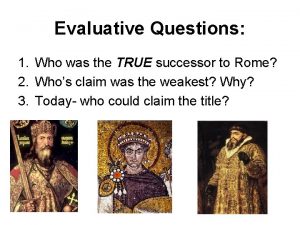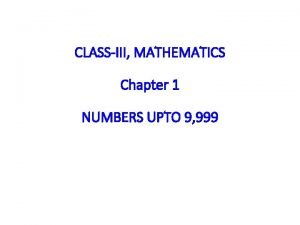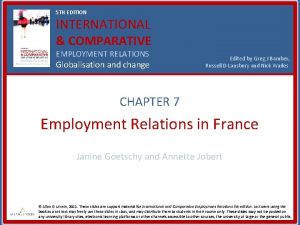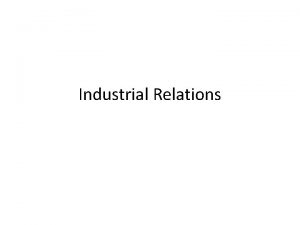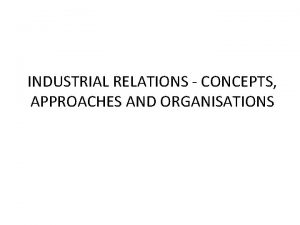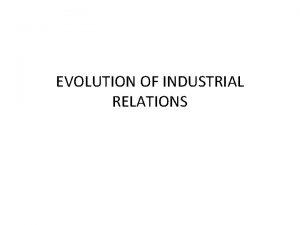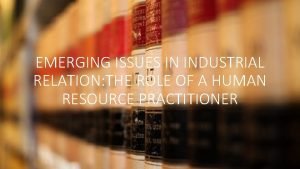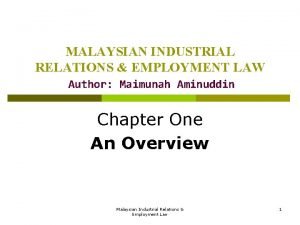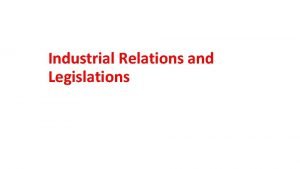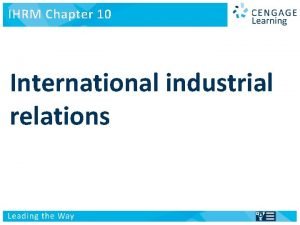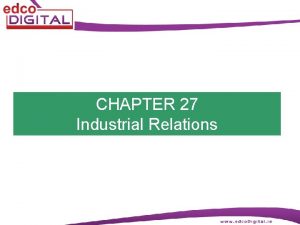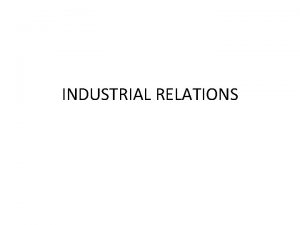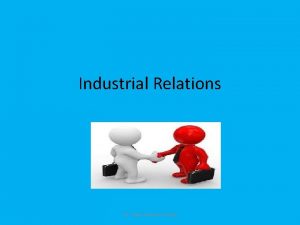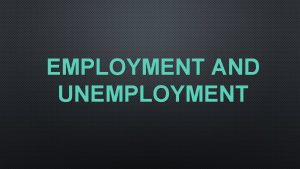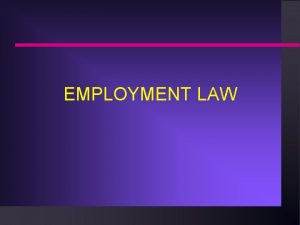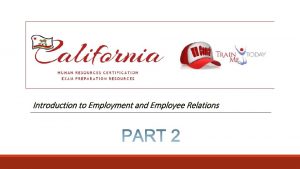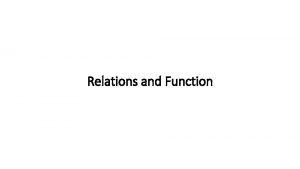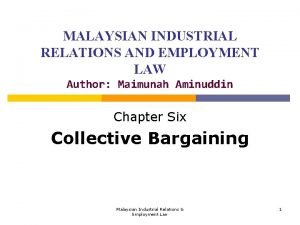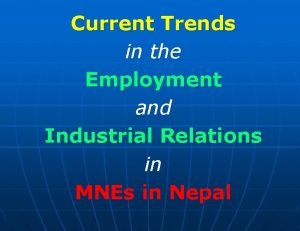EMPLOYMENT RELATIONS the successor to Industrial Relations and















- Slides: 15

EMPLOYMENT RELATIONS- the successor to Industrial Relations and Human Resource Management?

Basic Proposition: The concepts and practices of industrial relations and human resource management are insufficient analytical and practical tools to understand conduct the increasing complicated process of employment relations. Therefor a newer bridging concept and approach is required. 2

What is Employment Relations It is concerned with: ◦ employment, unemployment and self employment ◦ how Individuals, groups, organisations or the State have their interests represented ◦ investigating what these interests are ◦ discovering how individuals manage and promote their interests within an organisation ◦ the way in which conflict is managed and regulated. 3

Older version of Employment Relations An important precursor to the older version of Employment Relations is the Systems Approach The Systems Approach was an early attempt to place Industrial Relations into a general theory or framework- traditional actors were seen to be the State, employers, unions and employees This approach also emphasised rules and practices as key Employment Relations outputs 4

Older version of Employment Relations Limitations of the Systems Approach ◦ more of a descriptive framework than an explanatory approach to Employment Relations ◦ preoccupied with rules and stability ◦ tends to overlook the dynamics of interest divergence and conflict 5

Older version of Employment Relations 6

Definition of the ‘new’ Employment Relations approach Has broadened over time, is still evolving Uses an interdisciplinary approach- sociology, economics, psychology, history and politics Can use a conflict frame of reference similar to but not identical with the Older Version of Employment relations- radical pluralism and marxism, pluralism and unitarism. 7

Levels of Employment Relations International National Industry Organisational or corporate Workplace Individual. 8

Employment Relations Social Action: ◦ Individual, subjective and action or-oriented approach to Employment Relations ‘asks’ such questions as how does the individual ‘see’ or interpret employment relations recognises that people may not share similar ideology and often attach different meanings to Employment Relations interactions and changes It tries to explain individual behaviour- motivation, bargaining and conflict resolution. 9

Employment Relations Social Approach ◦ Weakness of this approach its explanations tend to be subjective and are often ideologically motivated Difficult to obtain a comprehensive view of Employment Relations changes and interactions. 10

Employment Relations Conflict frames of reference: ◦ - attempt to explain why conflict exists in the workplace, the status that is attached to conflict (i. e. positive or negative) and how conflicts should be addressed to employers, unions and employees ◦ -conflict frames of reference constitute a general view of employer and employee relationship ◦ -wide coverage: from unitarism to marxism. 11

Employment Relations Unitarism ◦ Paternalism, little or ‘no room’ for conflict, or union or employee influence ◦ Managerial prerogative is stressed ◦ Neo- unitarism: in certain forms of HRM ◦ Criticisms: Unrealistic and can lead to employee unhappiness and lower productivity By passes different views of employee rights. 12

Employment Relations Pluralism ◦ Acknowledges managerial prerogative and employee rightsoperates as a continuous balancing act ◦ Collective and individual approaches ◦ Criticisms May focus too much in conflict resolution and how to accommodate changes and power differences- thus there is a need for a more comprehensive analysis of conflict Could put more emphasis on government influence and how power differences exist at all Employment Relations levels. 13

Employment Relations Radical Pluralism (influenced by Marxism) ◦ Conflict is inherent in Employment Relations -power imbalance between employees and employers Unions can counter but not overcome exploitation of employees Radical pluralism emphasises power differences and private ownership of the means of production. Employers have power and use it to further their own goals. The State is not a neutral actor and is influenced by the structure and power constellations of the capitalist society. 14

Conclusion The language may have changed but a lot of the components have remained the same. 15
 The true successor
The true successor Successor number
Successor number Byzantine empire successor
Byzantine empire successor International and comparative employment relations
International and comparative employment relations Meaning of industrial relations
Meaning of industrial relations Relations
Relations Systems approach to industrial relations
Systems approach to industrial relations Stages of evolution of industrial relations
Stages of evolution of industrial relations Emerging challenges of industrial relations in india
Emerging challenges of industrial relations in india Tripartite system in malaysia
Tripartite system in malaysia Industrial relations
Industrial relations Approaches to industrial relations
Approaches to industrial relations International industrial relations in ihrm
International industrial relations in ihrm Theory of industrial relations
Theory of industrial relations Employee relations in public relations
Employee relations in public relations Hát kết hợp bộ gõ cơ thể
Hát kết hợp bộ gõ cơ thể
